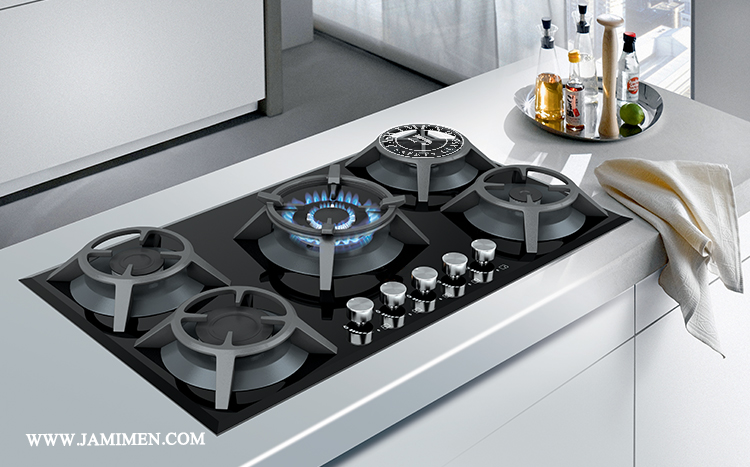The History of Built-in Stoves and the Evolution Towards Glass Built-in Stoves
The History of Built-in Stoves and the Evolution Towards Glass Built-in Stoves

Introduction
The gas stove, as one of the most essential cooking tools, has been at the center of human life from ancient times to the present. From open fires in ancient times to modern stoves, every innovation in this industry has aimed to improve efficiency, safety, and aesthetics. In recent decades, built-in gas stoves with glass designs have become one of the most popular choices in kitchens worldwide due to their combination of advanced technology and modern design.
This article examines the history of built-in stoves and the integration of glass into their design.

The History of Built-in Gas Stoves
The first operational gas stove was designed in 1826 by James Sharp in England. This device, which used town gas as its energy source, marked a major transformation in cooking. In the early 20th century, with advancements in the gas supply industry and the downsizing of urban homes, the need for stoves that occupied less space emerged. These changes led to the design and introduction of built-in gas stoves, suitable for installation on cabinets, and their global production by home appliance manufacturers.
Built-in gas stoves quickly gained popularity among families due to their flexibility in installation and use, becoming an integral part of modern kitchen design.

The Integration of Glass into Built-in Stoves
In the 1960s, advancements in the production of heat-resistant glass brought about the idea of incorporating glass into stove designs. Tempered glass and ceramic glass, known for their high resistance to temperature changes and impacts, quickly became key elements in the design of built-in gas stoves.
The German company Schott AG, with its introduction of heat-resistant ceramic glass under the name Schott Ceran in the 1970s, played a pivotal role in this transformation. This technology enabled the design of stoves with smooth and glossy surfaces that not only provided high performance but also added a modern aesthetic to kitchens.
Advantages of Glass Built-in Stoves
Glass stoves have quickly become popular in global markets due to the following advantages:
- Modern Aesthetics: The smooth and glossy surface of glass provides a modern and elegant appearance to kitchens.
- Ease of Cleaning: Heat-resistant glass is easy to clean, and stains and grease can be effortlessly wiped away.
- High Durability: Tempered glass is highly resistant to sudden impacts and temperature changes.
- Design Versatility: Glass allows for a variety of colors and patterns, making it possible to produce thousands of designs, ensuring a wide range of choices in the market.
The History of Built-in Stoves in Iran and Jam Imen’s Role in Developing the Glass Stove Industry
In 2009, Jam Imen, recognized as the first and leading manufacturer of glass built-in stoves in Iran, produced the country’s first glass stoves. By relying on technical expertise and a team of specialists, the company was able to create a significant revolution in this industry.
Today, Jam Imen stands as the largest producer of glass for home appliances in Iran. With its advanced production line and an annual capacity of approximately one million glass built-in gas stoves, the company remains a pioneer in this field. In addition to meeting domestic market demands, Jam Imen’s products adhere to international standards and are exported to many countries worldwide, holding a significant share in international markets.
Future Plans of Jam Imen
Jam Imen has ambitious plans for the future with the aim of expanding production capacity and entering new markets. The company is planning to establish new production lines and adopt innovative technologies to enhance quality, improve efficiency, and reduce the use of natural resources while minimizing costs. Expanding exports to additional countries is also a key focus of Jam Imen’s strategic plans.
Conclusion
Glass built-in gas stoves, with their combination of technology, modern design, and high functionality, have become an integral part of modern kitchens. In Iran, Jam Imen, with its innovations, has not only met domestic market demands but has also emerged as a major player in international markets.
The company’s efforts to improve quality and expand exports demonstrate the high capabilities of Iranian industry on a global scale. With a focus on the future and leveraging advanced technologies, Jam Imen continues to grow and thrive in this industry.




